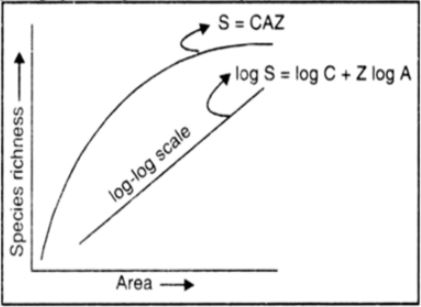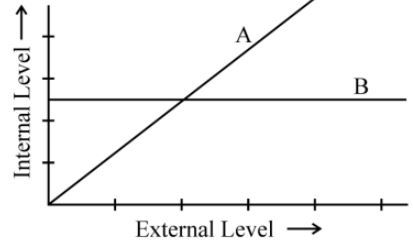CBSE Class 12 Biology important long answer type questions are provided below to help students prepare for the upcoming CBSE Class 12 Biology Term 2 Exam 2022. These questions are entirely based on the Class 12 Biology Term 2 Syllabus. All the questions are suggested by the experienced teachers for last minute revision before the exam. Therefore, students are advised to practice all the 5 marks questions given below to prepare well for the exam and score the maximum marks. Check the chapter-wise questions below.
New!
CBSE Class 12 Biology Solved Practice Paper by Experts for Last Minute Revision before Term 2 Exam
CBSE Class 12 Biology Sample Paper by Experts for Term 2 Board Exam 2022
Check CBSE Class 12 Biology Important 5 Marks Questions (Chapter-Wise)
Chapter 8 - Human Health and Diseases
1.Describe the lymphoid organs of the body and their role.
2.Trace the events that occur in the human body to cause immune deficiency, when HIV enters the body.
3.What is the basic principle of vaccination? How do vaccines prevent microbial infections?
(b) Name the organism from which Hepatitis b vaccine is produced.
(c)Differentiate between B -cells and T- cells
4.What are the methods of cancer detection? Describe the common approaches for treatment of cancer?
5.Mention one application for each of the following
a) Passive immunization
b) Antihistamine
c) Colostrum
d) Cytokine barrier
e) ELISA
CBSE Class 12 Biology Sample Paper & Marking Scheme for Term 2 Exam 2022 (By CBSE Board)
Chapter 10 - Microbes in Human Welfare
1.Explain the different steps involved during primary treatment phase of sewage.
2.Secondary treatment of the sewage is also called ‘Biological treatment’ .Justify the statement and explain the process.
3.Describe how do ‘flocs’ and ‘activated sludge help in sewage treatment.
4.Answer briefly
(a) How is sewage harmful to man?
(b) What is organic farming?
(c) Which group of organisms attack insect and arthropod? How are they best biocontrol biological agent?
(d) What is the difference between flocs and primary sludge?
(e) What is metagenomics?
8.Write a short note on
(a) Baker’s yeast
(b) Alcohol
(c) Statin
(d)Brewer’s yeast
(e) Streptokinase
Chapter 11 - Biotechnology - Principles and Processes
1.Any recombinant DNA with a desired gene is required in billion copies for commercial use. How is the amplification done? Explain.
2.How is the bacterium Thermus aquaticus employed in recombinant DNA technology?
3.What is bioreactor? Draw a labelled diagram of a sparged stirred bioreactor. Explain its functioning.
4.Describe the parts of a Simple stirred-tank bioreactor.
5.Draw well labelled diagrams of simple stirred tank bioreactor and sparged stirred tank bioreactor. distinguish between simple stirred tank bioreactor and sparged stirred tank bioreactor.
Chapter 12 - Biotechnology and its Application
1.What is gene therapy? Illustrate using the example of adenosine deaminase (ADA) deficiency?
2.Digrammatically represent the experimental steps in cloning and expressing an human gene (say the gene for growth hormone) into a bacterium.
3.List five recombinant proteins which are used in medical practice. Find where they are used as therapeutics.
4.(i) What is plasmid?
(ii) Plasmid is a boon to biotechnology. Justify this statement using the production of human insulin as an example.
5.(i) How is mature insulin different from proinsulin secreted by pancreas in humans?
(ii) Why is the functional insulin thus produced considered better than the ones used earlier by diabetic patients?
(iii) Describe the responsibility of GEAC set up by the Indian government.
Chapter 13 - Organisms and Populations
1.(a) What is an age-pyramid ?
(b) Name three representative kinds of age-pyramids for human population and list the characteristics for each one of them.
2.(a) Following are the responses of different animals to various abiotic factors. Describe each one with the help of an example.
(i) Regulate
(ii) Conform
(iii) Migrate
(iv) Suspend
(b) If 8 individuals in a population of 80 butterflies die in a week, calculate the death rate of population of butterflies during that period.
3.(a)The graph given below represents the organisms response to temperature as an environmental condition.
(i) Which one of the two lines represents conformers and why ?
(ii) What does the other line in the graph represent and why ?
(b) Mention the different adaptations the parasites have evolved with, to be able to successfully complete their life cycles in their hosts.
Chapter 15 - Biodiversity and its Conservation
1.(a) Why should we conserve biodiversity ? How can we do it?
(b) Explain the importance of biodiversity hot-spots and sacred groves.
2.Study the graphical representation of species richness-area relationship given below:
a) What do S,A,C and Z represent in the graph?
b) What will be the range value of ‘ Z line ‘ if we analyze the species area relationship for very large areas like an entire continent.
3.What is the difference in the basic approaches towards in situ & ex situ conservation. Explain with examples.


Comments
All Comments (0)
Join the conversation